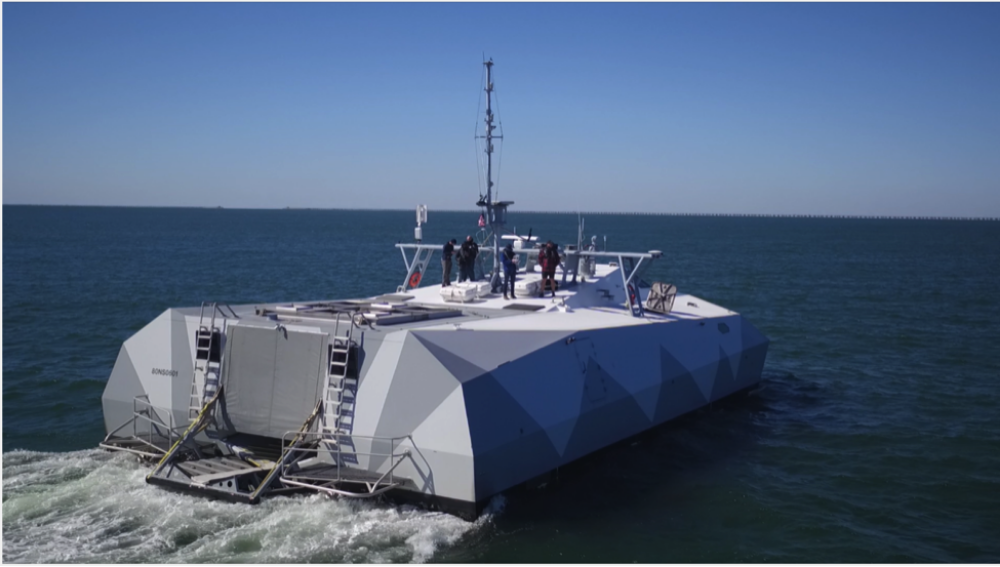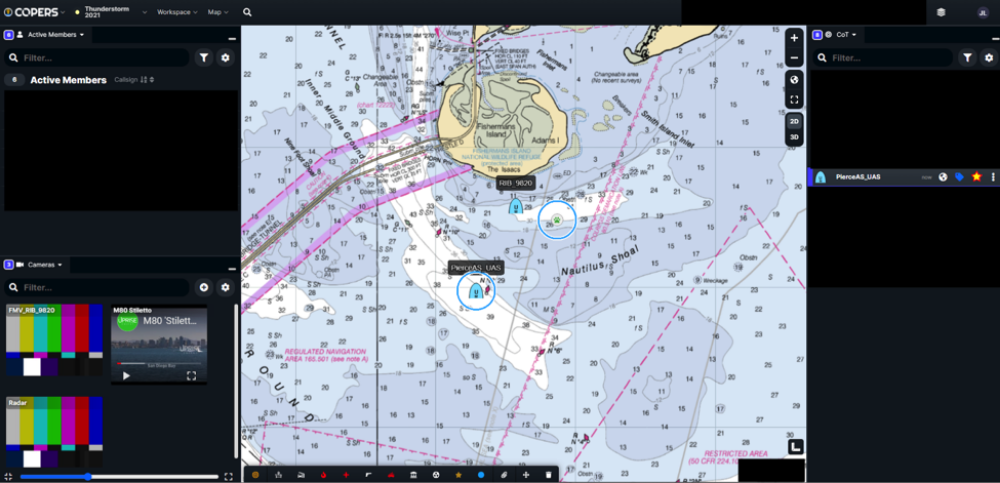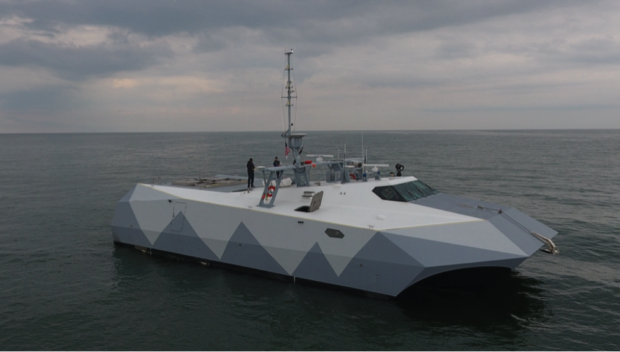Pierce Aerospace announced that it’s signed a Cooperative Research and Development Agreement (CRADA) with Naval Surface Warfare Center Carderock and conducted maritime UAS Remote ID experimentation aboard the M80 Stiletto during the US Navy’s Thunderstorm 2021 experiment. The CRADA was executed for a three year period and this was the first maritime experiment for Pierce Aerospace’s Flight Portal ID, Remote ID technology suite.
“This was the first time stress testing Flight Portal ID in a maritime environment, exposing the system to vibration, shock, sea state, and marine airspace while aboard a US Navy vessel,” said Aaron Pierce, CEO of Pierce Aerospace. “The experiment was very valuable to our ongoing prototype development and we immediately began iterating with lessons learned from the maritime environment.”
The US Navy’s M80 Stiletto hosted the event, with multiple Rigid Inflatable Boats (RIBS), a jet ski, and an unmanned surface vessel (USV) all contributing to the multi-asset experiment. The M80 Stiletto was originally developed for US Navy Special Warfare and has an extensive history supporting next generation technology and prototype experimentation. The USV was a Seasat X3, provided by Seasats.

Screen capture of video shot from a UAS equipped with FPID while flying from the M80 Stiletto during Thunderstorm 2021
During the experiment Pierce Aerospace integrated Flight Portal ID into Air Force Research Laboratory’s (AFRL) COPERS Common Operating Picture. COPERS provides a distributed web-based common operational picture that enables anyone with approved credentials to login and participate or observe events monitored and administered by COPERS. The system is designed for diverse integration and delivers superior situational awareness across a wide range of users.

COPERS displaying a UAS via a Flight Portal ID’s Remote ID data stream. UAS at the event were equipped with FPID Broadcast Modules while FPID Receivers were located aboard the M80 Stiletto and rigid inflatable boats
“It was exciting to conduct our first integration into COPERS and provide US Government stakeholders with an opportunity to remotely view the Remote ID tracks produced by drones equipped with our Flight Portal ID Remote ID broadcast modules,” said Pierce. “This was a unique opportunity for us to demonstrate dual use capabilities in a joint force implementation with US Navy and US Air Force technology at the same time.”
“The Pierce Aerospace team integrated into COPERS and was ready to go before arriving dock-side. Their technology, coupled with the situational awareness power of COPERS provided a picture of the operational space that had not been previously available,” said Preston Hoeve, COPERS Principle Investigator, Centauri/KBR. “We are excited to continue our work with the Pierce Aerospace team.”
Dennis Danko, the JPEM program manager, described Pierce Aerospace’s participation as an opportunity to demonstrate Flight Portal ID in a realistic maritime environment against the backdrop of a relevant tactical scenario. According to Danko,
“the focus of this demonstration was Joint Contested Logistics.” Danko continued, “We selected 10 technologies, integrated them into the boat and conducted underway experiments over a couple weeks. One of the highlights was the ability and willingness of technology providers like Pierce Aerospace to collaborate and combine new technologies in innovative ways to address a common tactical goal.”
Pierce continued,
“I am very grateful for our team’s opportunity to work with NSWC Carderock and the entire M80 Stiletto team. Stiletto provides an unmatched and unique platform that enables us to integrate and then iterate our dual-use UAS Remote ID technology in a maritime environment with technology relevant to our stakeholders. We look forward to going out to sea with the team again.”
Source: Press Release

